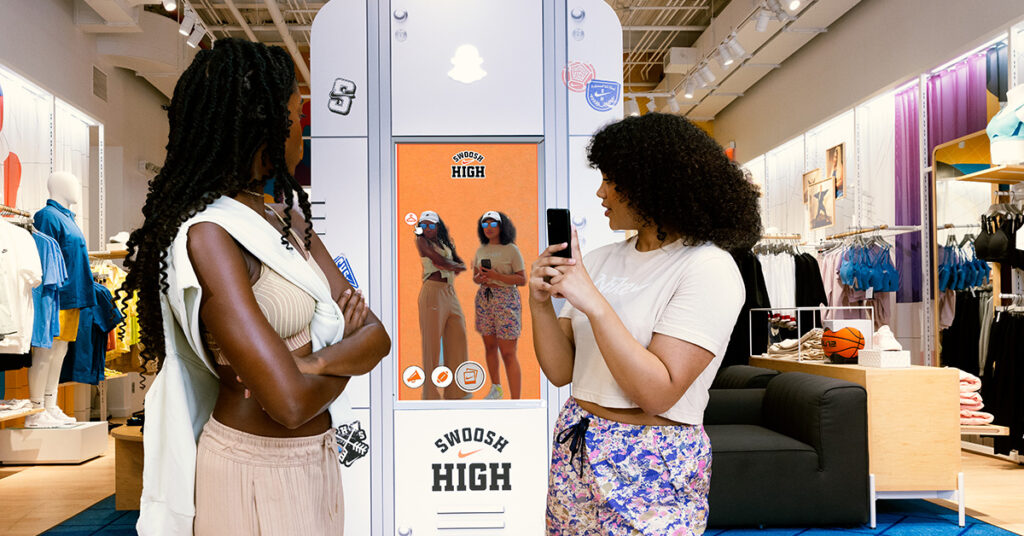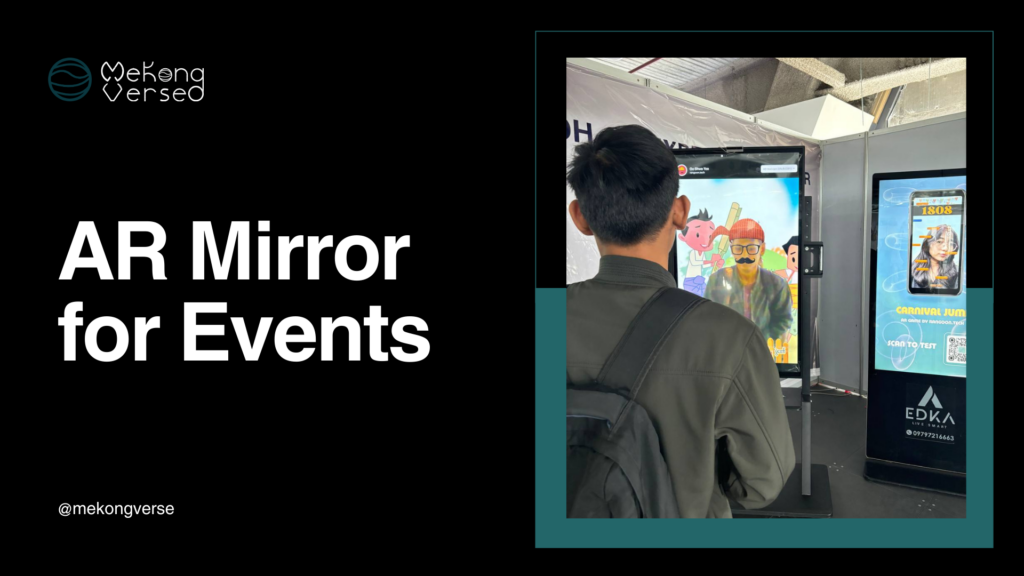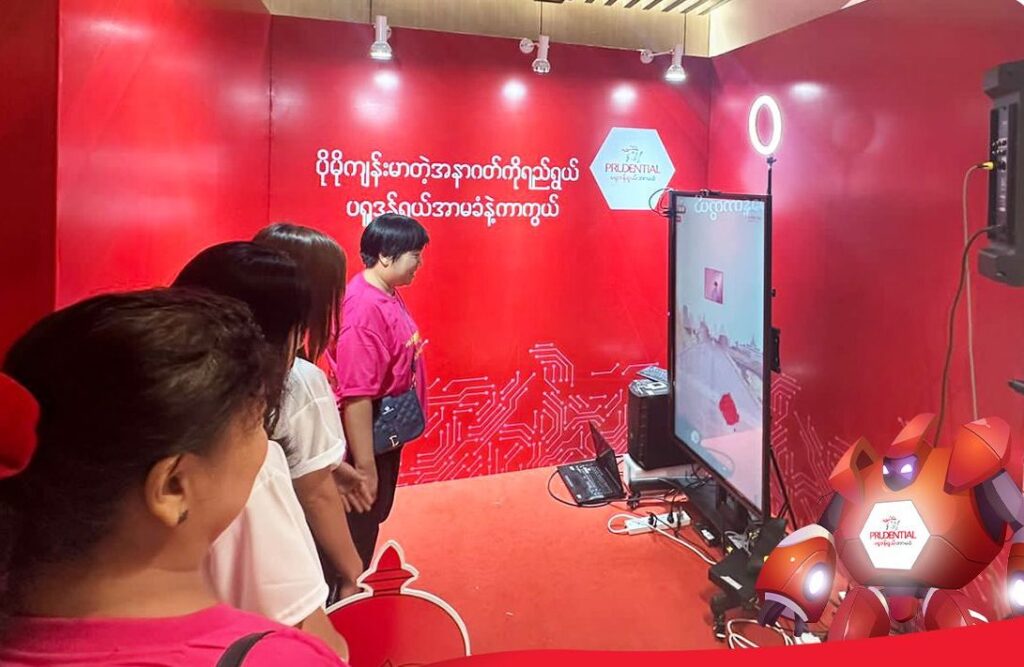Nike AR Mirror Case Study
The Nike AR Mirror Case Study is a striking example of how immersive technology can revolutionize brick-and-mortar retail. Set in Nike’s flagship store in Williamsburg, New York, this campaign harnessed gesture-based AR through a Snapchat-powered Smart Mirror to drive interaction, conversion, and viral reach. Unlike passive displays, this mirror didn’t just show products—it invited people to play with them, try them on virtually, and share the moment with the world.
Through a well-executed mix of product interaction, gamification, and social media integration, Nike not only increased foot traffic and dwell time but also transformed casual shoppers into brand ambassadors.
What Is the Nike AR Mirror Experience?
Nike partnered with Snapchat to install an Augmented Reality Mirror—a cutting-edge, gesture-controlled smart display that let shoppers virtually try on a cap and glasses. Instead of needing to download an app, customers simply stood in front of the mirror and used hand gestures to swipe through looks and try on items.
This seamless interaction eliminated friction and added excitement to the in-store journey. The experience went beyond novelty—it served both form and function by boosting shopper confidence and encouraging product discovery.
Gesture-Based Experience Explained
Nike’s AR Mirror used natural motion gestures, such as swiping a hand in front of the screen, to change AR effects, try on caps, or initiate games. This design made the interaction feel intuitive and futuristic, without the intimidation factor that sometimes accompanies high-tech retail.
There was no learning curve. Just step up and interact.
AR Mirror Retail Strategy
The strategy here was straightforward: merge entertainment with commerce. By giving visitors something fun to do—like play an AR basketball game—and rewarding them with real coupons, Nike capitalized on the powerful interplay between digital excitement and physical conversion.
Moreover, the mirror acted as a data-gathering tool, tracking how long users engaged with products, which styles were most interacted with, and how users navigated the experience. All this data fed back into retail strategy, enabling smarter merchandising decisions.
How the Virtual Try-On Boosted Shopper Engagement
This wasn’t just about flashy tech. It was about practical application. Nike’s AR Mirror let customers preview sneaker colorways and outfits without touching anything—a particularly valuable experience in the post-pandemic retail world.
The ease of trying on products virtually translated into higher interaction rates. According to Snapchat, users interacted with the mirror up to nine times more than they did with static displays. When engagement goes up, so do conversions.
AR Gaming + Real-Time Coupon Integration
One of the most engaging parts of the activation was the AR basketball mini-game. Shoppers who participated in the game could win digital discount codes redeemable on the spot.
This wasn’t just for fun—it directly influenced purchasing behavior. It tied a sense of achievement and play to savings, reinforcing positive feelings toward the brand while increasing basket size.
Bridging Entertainment and Sales Funnel
By placing the mirror near the entrance and checkout areas, Nike strategically funneled attention where it mattered. Shoppers had a reason to enter the store, stay longer, and make a purchase—all thanks to an interactive and enjoyable tech moment.
Social Sharing: The UGC Powerhouse
Post-purchase, Nike encouraged shoppers to snap photos using AR filters directly from the mirror. These images were shareable via Snapchat, Instagram, and TikTok, driving organic visibility.
This user-generated content acted as free advertising, with real people showcasing real experiences, giving the campaign long-tail reach beyond the physical space.
Snapchat’s Role in Execution
Snapchat’s enterprise AR toolset (ARES) made this experience possible. It allowed Nike to deliver high-fidelity augmented experiences without needing shoppers to install an app or follow complex instructions.
Snap also enabled data collection, content sharing, and future personalization based on user behavior.
Creating Share-Worthy Moments
Nike nailed the “Instagrammable moment” by crafting a mirror that didn’t just reflect—but reacted. When customers saw themselves wearing the latest kicks in a futuristic, responsive screen, snapping and sharing became second nature.
Impact on Foot Traffic
Data from the activation showed a 3x increase in foot traffic compared to regular window displays. The mirror drew attention from outside, encouraging people to step in—particularly younger shoppers looking for interactive retail experiences.
Conversion Metrics and In-Store Behavior
Beyond foot traffic, conversion rates improved as well. According to industry sources, Nike’s conversion rate jumped significantly when customers engaged with the mirror, and dwell time increased dramatically.
How Nike Measured AR ROI
This wasn’t just an art project. Every interaction was tracked: from gesture recognition to coupon redemption. The team could then correlate these metrics with POS data to assess impact.
What Made the Campaign a Success?
- Low-friction tech with no required downloads
- Social engagement built into the user journey
- On-the-spot coupon rewards
- Interactive product discovery
- Data collection for future optimization
Customer Testimonials and Reactions
Shoppers raved about how “fun” and “futuristic” the experience felt. Some mentioned that they came just to try it, and ended up buying.
Visual Merchandising Meets Tech
Rather than cluttering the store with signage, Nike used the AR mirror to present collections in a sleek, modern way. It blended aesthetics and utility, complementing Nike’s brand identity perfectly.
Optimizing Store Layout with AR
Placement was key. Nike initially had the mirror near checkout but later moved it to the storefront to drive foot traffic, highlighting how layout decisions can maximize AR’s value.
Why AR Mirrors Succeed in 2025
With maturing hardware, faster 5G, and a more tech-literate population, AR Mirrors have transitioned from novelty to must-have retail infrastructure.
Retail Trends Reflected in Nike’s Campaign
Nike aligned itself with key consumer trends: immersive tech, gamified shopping, personalization, and UGC. The brand didn’t just follow trends—it shaped them.
How Mekongverse Brands Can Learn from Nike
Retailers across Southeast Asia can apply the same tactics:
- Use localized AR content
- Run culturally relevant UGC contests
- Offer in-store rewards for digital engagement
- Use AR mirrors to introduce new products without physical inventory
Top 3 Takeaways for Global Marketers
- Gamify the Experience – Reward fun with savings.
- Think Omnichannel – Let in-store moments create online buzz.
- Measure Everything – Use AR data to optimize in real time.
Special Announcement: Mekongverse Is Giving Away One Free AR Mirror Project
In celebration of next-gen retail technology, Mekongverse is giving away one AR Mirror project absolutely free to a selected retailer in Thailand, Cambodia, Laos, or Myanmar. This includes setup, installation, content customization, and activation support.
Whether you’re a fashion boutique in Phnom Penh, a sneaker store in Bangkok, or a beauty brand in Vientiane or Yangon, this is your chance to transform your customer experience with zero upfront investment.
🟢 Apply now at https://mekongverse.co/ar-mirror-for-retail/ to enter.
🚀 Deadline: August 30, 2025
Conclusion: The Future of AR in Retail
The Nike AR Mirror case study reveals how future-facing retail isn’t about replacing human interaction—it’s about enhancing it. With strategic design, gamification, and social integration, AR can turn a regular store into a destination and a moment into a memory.



